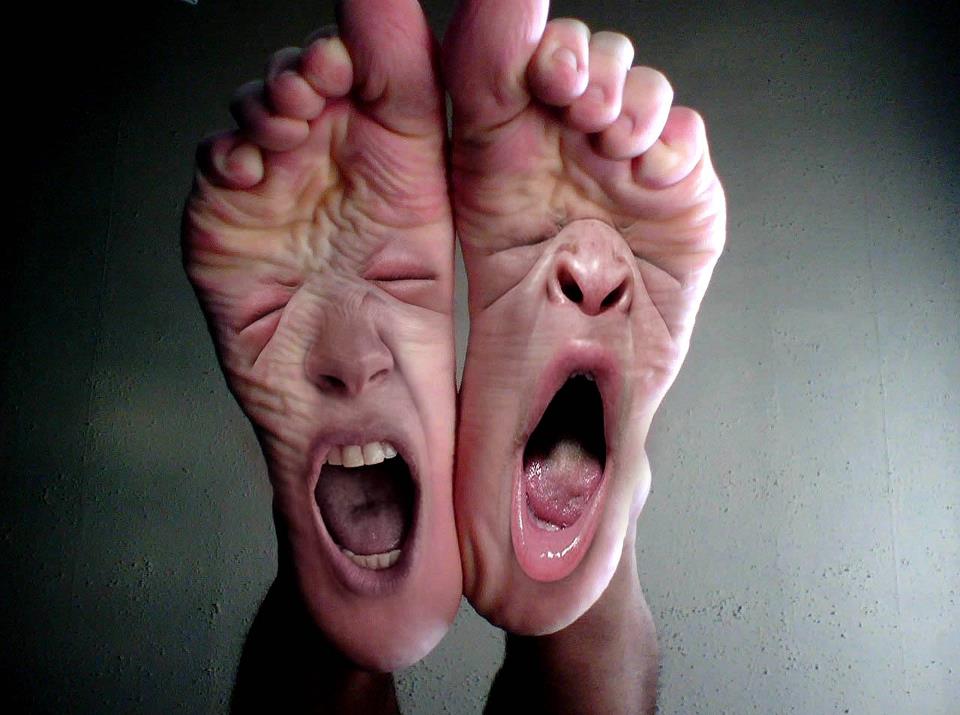 Many people have hard patches of skin on their feet. Especially women who wear less-than-sensible-shoes. If that's you, it's likely you have at least one corn or callus on your feet.
Many people have hard patches of skin on their feet. Especially women who wear less-than-sensible-shoes. If that's you, it's likely you have at least one corn or callus on your feet.
Remember, a corn or callus is an area of thickened skin. (We call that thicker area of skin hyperkeratosis, since it reflects a build of keratinocytes, or skin cells.) It develops in spots on your feet that are prone to pressure. Though not a hard rule, corns tend to develop on or between your toes. But a callus will usually form on the bottom of your foot.
Sometimes, you'll notice pain in the bottom of your foot that's not a callus. Because plantar warts can also thicken skin in the area, you may confuse these two conditions initially. But your podiatrist won't, which is why you need to come to the office for any foot pain. (More on that below.)
Now that you've got the basics of location down, let's take a closer look at why these skin patches begin to develop.
Why Do You Get Corns and Calluses?
Corns and calluses are your body’s natural way of protecting itself. In other words, there may be times when you want to leave them alone. After all, these formations cushion your feet from all kinds of pressure. (That pressure could be external, like from bad shoes, or internal, because of bone structure.) But what can happen is that thick layer can get so hard that your foot hurts.
Why would that happend? Problems begin when you don’t relieve the pressure on your feet when the corn or callus first appears. So pressure continues to build on your foot. And the area of thickened skin becomes inflamed and painful.
Think that’s bad? It can get worse! A small callus can develop a deep core which extends into your foot (called a nucleation). This could leave you with a condition known as Intractable Plantar Keratosis. And, with this deep callus condition, your life will change. Walking will be so painful it can feel like you’re stepping on glass every time you put your foot down! Which means it's well past the time to treat those corns!
OTC Treatments for Corns
If you're already in pain from corns, you might want to hit your local drug store. After all, it's packed with "cures" for corns and callouses. Most of which promise simple directions and great results.
Unfortunately, these at-home treatments for calluses merely remove the top layer of hard skin. But the deeper damage remains, so your problem returns. Similarly, OTC corn treatments don't deliver on those promises. In fact, they can actually harm your feet! Many OTC treatments are simply ineffective. But some can actually make your corns more pronounced. And the chemicals in others may trigger a terrible reaction on your foot. They could actually burn a hole in your skin, leaving you with a dangerous ulcer. For that reason, you should never use these treatments if you have sensitive skin or compromised circulation. (Especially if your circulation issues are caused by diabetes.)
Treating Corns at the Podiatrist
When treating a corn, it's important to understand its anatomy. Unlike a callus, a corn forms around a hard, central core. Now, this doesn't mean that corns have roots: that's a myth. Because of this fact, removing the core won't solve your problem. In fact, without further treatment, your corn will likely return. That's because corns don't grow from their core. As I mentioned earlier, they form as a response to pressure on it. Therefore all you'll get by removing the corn is temporary pain relief.
If you don't resolve your pressure problem, that corn will come back. Again and again. If you want to prevent that corn from returning, we must stop whatever is causing the pressure. Sometimes, that means changing your shoes. You should look for pairs that better accommodate your foot, reduce pressure on your bone. Now, in severe cases, we could also treat the pressured bone with foot surgery. This would most treat the pressure and cure your corn problem.
Of course, sometimes, pressure doesn't come from your bone. In fact, many corns come from a hammertoe deformity, where your toe knuckle rubs against the shoe. If that's the case for you, we can only cure your corns by correcting the hammertoe condition with surgery.
Believe me, I understand that no one wants to go in for surgery to correct a corn or callus. Which is why you shouldn't wait to make an appointment when you start to feel pain or pressure in your feet. What's a smarter move? Come see me, your Houston podiatrist, as soon as you notice a change in the texture of your skin. That could be an early warning sign that a corn or callus is forming.
At Tanglewood Foot Specialists, I carefully examine corns and calluses. That way, I can determine their cause, then create a custom treatment plan to manage pain and pressure. I've got several treatment options. These include the use of padding or changing shoes to reduce pressure. You may also need orthotics, since they can relieve the pressure beneath your foot.
Now, sometimes, you will need surgery. But that only happens if you let corns or calluses develop unchecked. In other words, the sooner you come see me, the less invasive your treatment options will be. So make an appointment today to start treating your painful corns.


